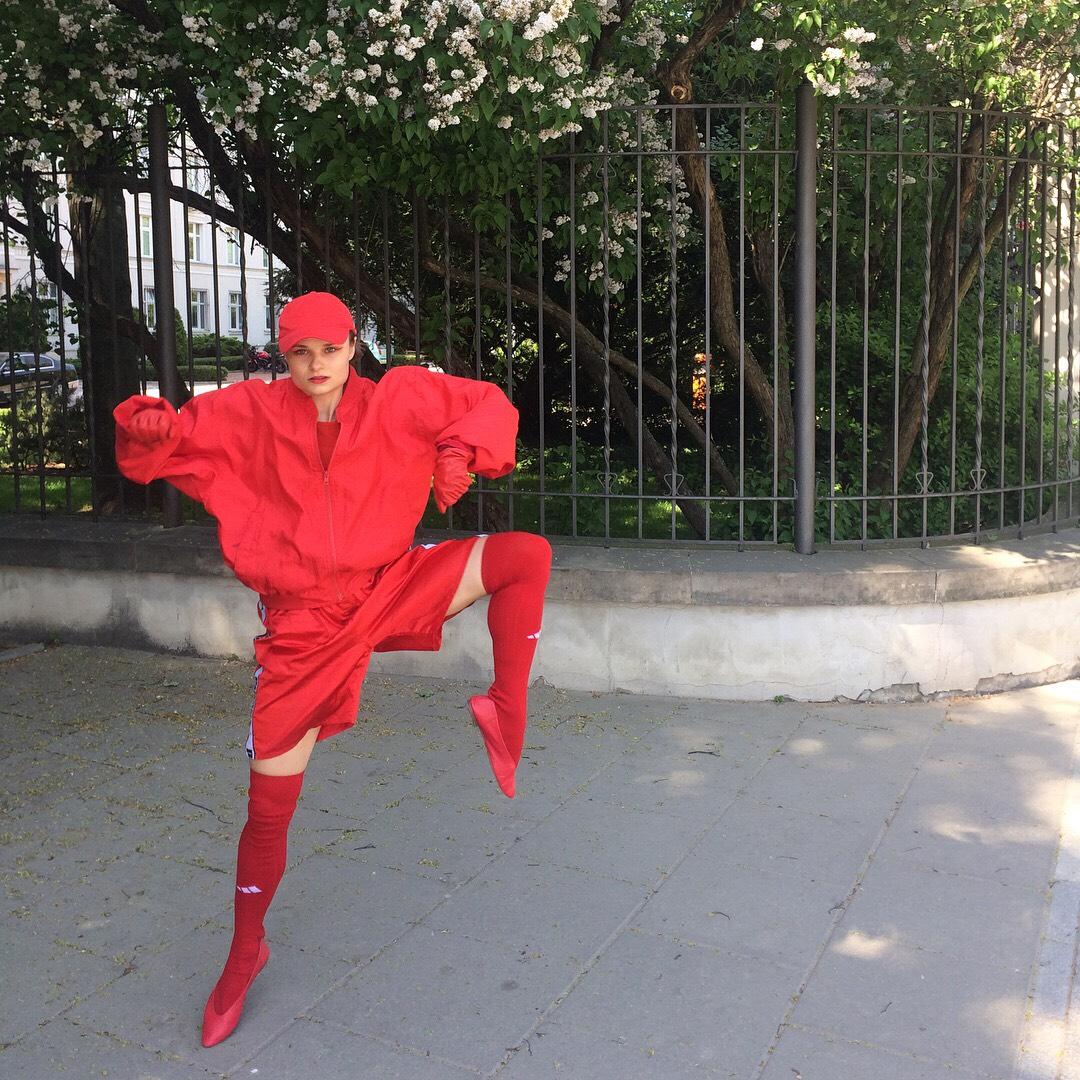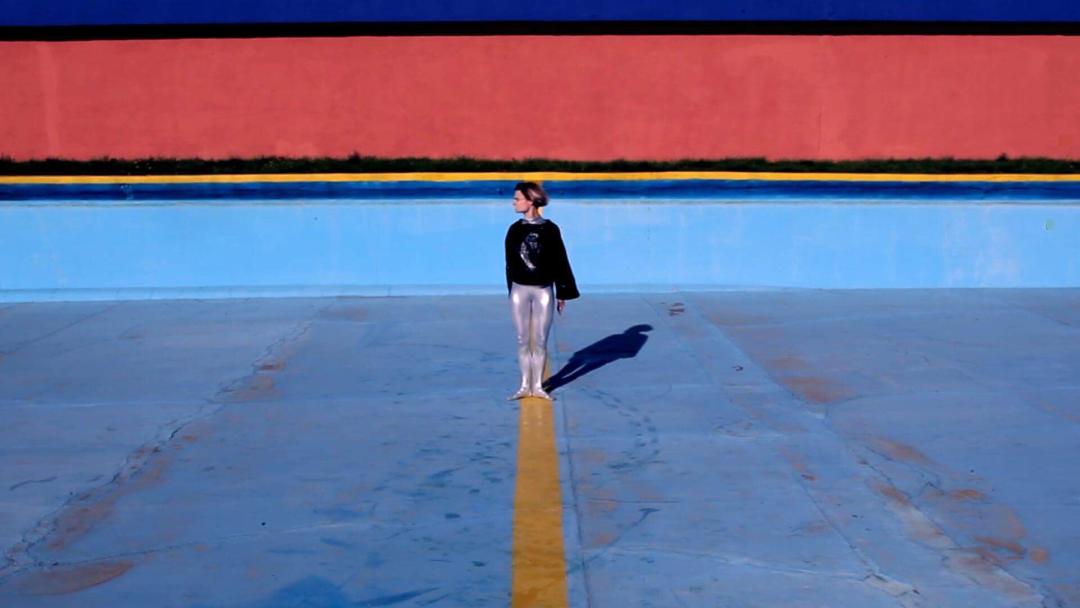Words by Katie Hagan.
With her work Be fruitful and multiply premiering at The Place a couple of months ago, choreographer Alka Nauman is not afraid to make dance which disturbs what can be insipidly described as ‘the norm’. Previously studying history of art, performance theory, ethnology and anthropology at the University of Warsaw, Alka is a multi-disciplinary dance artist at London Contemporary Dance School (LCDS) who is able to unite her body with her mind to create work which is progressive and unorthodox without any pretence.
She sits down with dance art journal to discuss her artistic process and her performance history in a highly-censored Poland, emphasising how important it is for artists to be active reactors against a dissonant, corrupt society.
Q: How much of your work is cerebral or from feeling?
A: I think it is a mix of intellectual rigour, curiosity, feelings and sense of humour. Satire is essential to my work as it can fight restrictive, existing power structures!
When creating my solo for LCDS, I became a little lost, even though I’d always had an urge to create. I was so preoccupied with my fresh immigration experience that I could not find any concrete ideas. Then I got to the studio and just listened to my body and its response to the studio space. I embraced the fact that I did not know what I was doing. I trusted the process and was completely honest about my intention and interests. From this, I made my solo Neurotic Migrant drawing on my very recent experiences to help settle into a new place.

Q: Colour is prevalent in your work. Why is this so?
A: I come from a grey country where colours are heavily politicised. Poland became a homogenous, white country after the Second World War. Although this atmosphere is slowly evaporating, it is still a country where people of colour are frequently beaten up and the police do nothing to help. Moreover, a rainbow installation was burned by neo-fascist groups and an activist is facing a few years in jail because she made a poster with a rainbow halo around Virgin Mary and Jesus.
From December 2017 to June 2018 I regularly danced in front of Poland’s largest, right-wing institutions. I borrowed clothes from my family, friends and strangers in different colours of the rainbow. Every time I was dancing in a different colour, and tried to be influenced by its energy and historical relationships. I called this performance Rainbow-healing: The unlearning of Polish national choreography.
I was sick of nationalist, homophobic, racist and xenophobic propaganda all around me. I decided to protest against it peacefully and positively. Whilst dancing, I imagined I was healing all those perilous black holes. Almost every time I was interrupted by the police, which wanted me to stop. What kind of world is it where dance and rainbows are forbidden?
Q: What are the biggest challenges you face as an artist?
A: I get so overwhelmed by the fact our planet is dying and fascism is rising. It preoccupies my mind all the time and I really wonder if there is any sense in what I am doing. Sometimes I wish I continued my work as an ethnographer or journalist, helping people in a more practical way. Then I have to remind myself politically-engaged art has significant power.
Nevertheless, there is a big risk of staying in ‘the art-world bubble’. I am very afraid of that. The feeling of being isolated in my studio, and feeling useless, is one of my biggest challenges.
The second one is related to the funding system. Almost all the institutions or festivals are funded by large corporations, where their applications force artists to make tough decisions. But there are different approaches, such as public funding, which allow artists to engage larger audiences.
Q: What are you working on currently? And what is next?
A: Currently, I am rehearsing as a dancer for a new work by Florence Peake and Eve Stainton. We have been reading, writing, painting, sculpting; it’s a completely collaborative process. I deeply admire Florence and Eve for establishing such a safe and empowering space, and thank them for enabling me to grow as an artist.

I’d also like to present my work Be fruitful and multiply, which premiered at The Place, in different spaces and events. The piece focuses on the ambiguous nature of the plastic bag; on its elegance and ugliness, as well as its daunting ability to adopt different forms. My work is based on compositions from Baroque paintings, where characters were entwined in a very dynamic way, mostly in catastrophic scenes. I wanted to fuse the artificiality and exaggerated devotion to plastics to reveal the absurdity of our attitude toward the environment.
Q: How important is site-specific work?
A: It is an endless source of inspiration! There is the history of a particular place, rhythms, smells, colours, atmosphere, and memories. We can’t stay in our own bubble where people all think the same. Site-specific orientated work pushes me out of my comfort zone. I am forced to confront people, but simultaneously people have to confront me. It teaches both sides how to brave and curious.
Site-specific art also poses a question about the ownership of public space in a world where more and more of it belongs to private companies. I am faithful to the idea that art needs to disrupt people’s daily routines.
Follow Alka on Instagram: alka_nauman
Header image: Martyna Tokarska.
